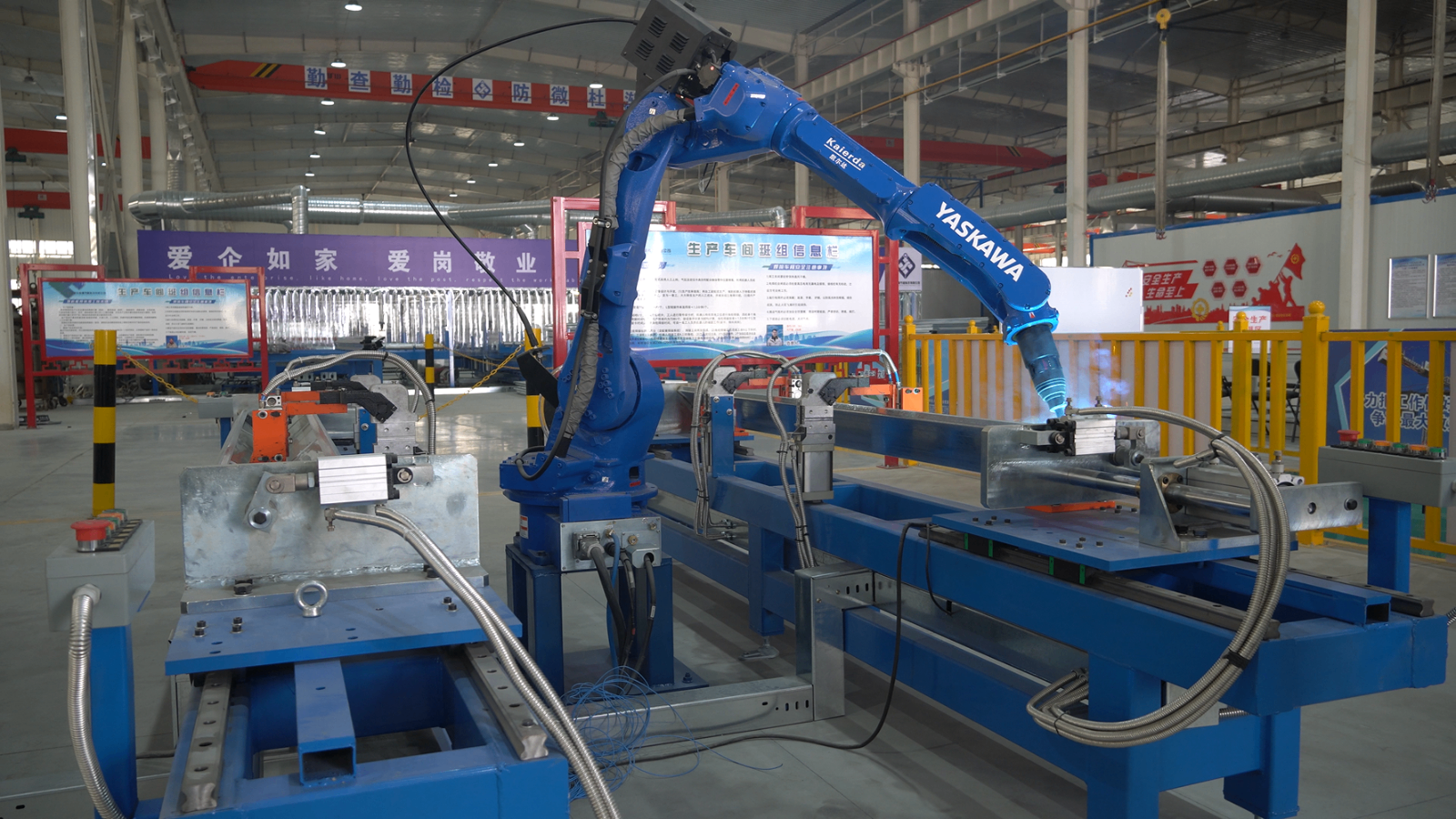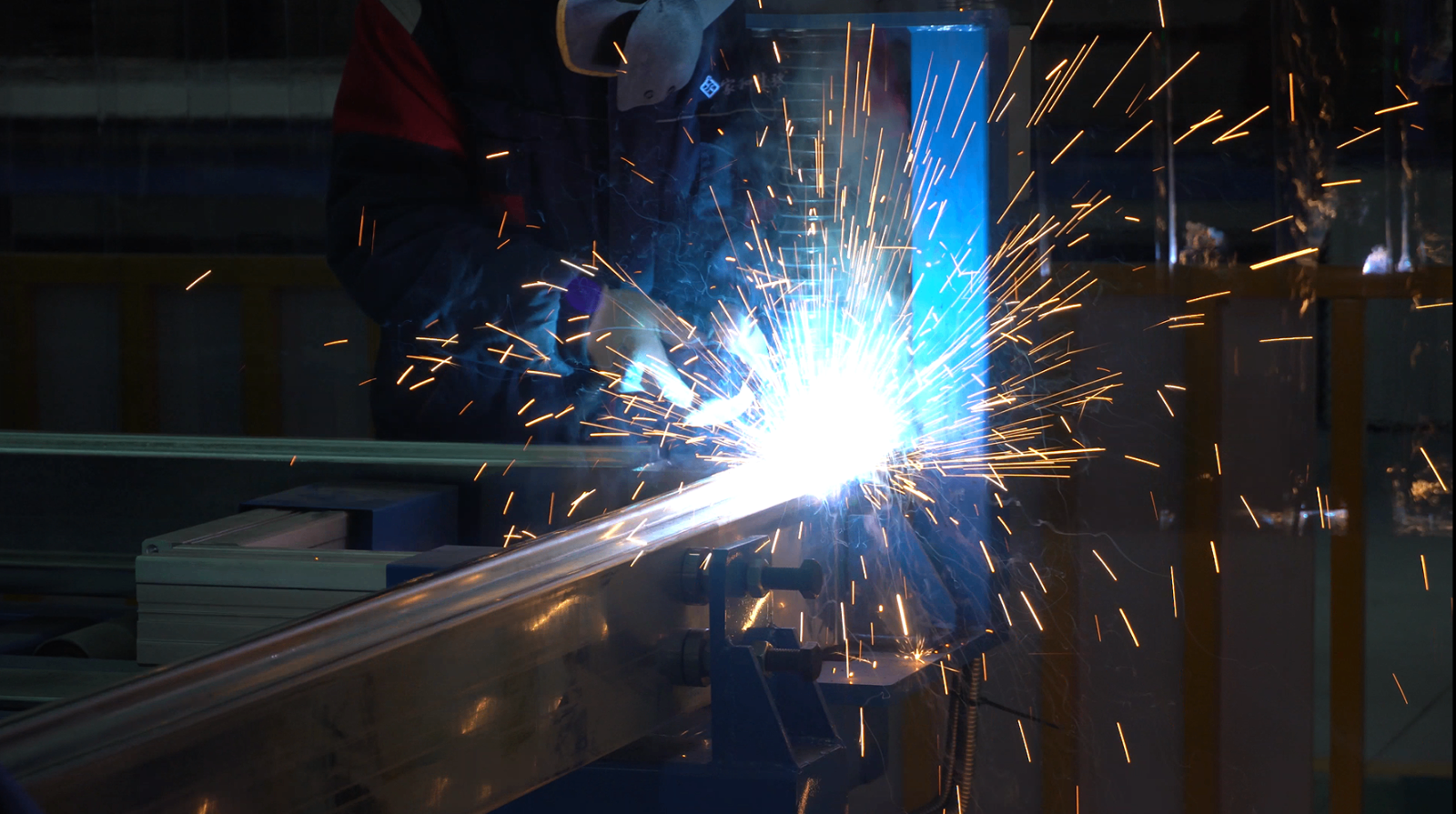
Hebei Jiaqiang Craft Exhibition
As a convenient and mobile temporary building solution, the stability of the structure of box houses largely depends on welding processes.
When assembling the structural framework of the box house, spot welding is first used for positioning. The purpose of spot welding is to preliminarily fix various components together and determine their relative positional relationship. The spacing of spot welding is generally determined by the size and shape of the component. When spot welding, it is important to control the welding current and time to avoid welding points that are too large or too small. The welding points should be evenly distributed to ensure that the components will not experience displacement during the subsequent formal welding process.

There are also many options for welding methods. Manual arc welding: suitable for welding in various positions, with flexible operation. When welding corner welds and butt welds in box houses, manual arc welding can effectively control the shape and quality of the welds. When welding, the welding rod should be selected according to the material of the steel. For example, for Q235 steel, E43 series welding rods can be used. Gas shielded welding: characterized by fast welding speed and high weld quality. Gas shielded welding can improve welding efficiency and reduce welding deformation when welding long welds in box houses. The commonly used protective gas is carbon dioxide, and the selection of welding wire should also match the steel.
Following a certain welding sequence during welding is crucial for reducing welding deformation. Generally, methods such as symmetrical welding and segmented back welding are used. For example, when welding the frame of a box house, weld the diagonal welds first, and then weld other welds. This can offset the welding stress and reduce the deformation of the structure. Weld quality control: During the welding process, it is necessary to ensure the fullness and uniformity of the weld seam. The height and width of the weld seam should meet the design requirements, and there should be no defects such as porosity, slag inclusion, cracks, etc. When welding, it is necessary to maintain an appropriate welding speed and the feeding speed of the welding rod (wire) to ensure that the weld metal is fully fused with the base metal. Interlayer cleaning: For multi-layer and multi pass welding, interlayer cleaning should be carried out after each layer is welded. Use tools such as wire brushes and grinding wheels to remove impurities such as slag and spatter from the surface of the weld seam, in order to ensure the quality of the next layer of weld seam.
Inspection and treatment are required after welding. Firstly, conduct a visual inspection. Check whether the appearance and shape of the weld meet the requirements, whether the surface of the weld is flat and smooth, and whether there are defects such as porosity, slag inclusion, and undercutting. For welds that do not meet the requirements, repair treatment should be carried out. In order to ensure the internal quality of the box house structure, non-destructive testing is carried out on the welds of key parts. The commonly used non-destructive testing methods include ultrasonic testing, radiographic testing, etc. Through non-destructive testing, defects inside the weld seam can be discovered, such as incomplete penetration and internal cracks, and timely measures can be taken for repair.

Although a series of measures have been taken to control welding deformation, a certain degree of deformation may still occur during the actual welding process. For the correction of welding deformation, mechanical correction method or flame correction method can be used. Mechanical correction method restores the deformed component to its original shape by applying external force, while flame correction method corrects the overall deformation by utilizing the local plastic deformation generated by flame heating.
Through the above comprehensive welding process, the stability and safety of the box house structure can be ensured, enabling it to play its due role in various environments.